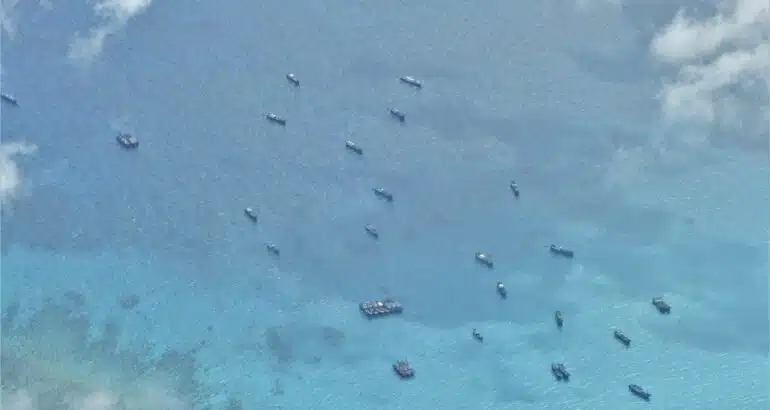Report: Assessing Military And Non-Military Incidents At Sea In Asia-Pacific
NAVAL NEWS
Naval News covered an APLN-VERTIC joint report titled “Assessing Military and Non-Military Incidents at Sea in the Asia-Pacific.”
The original post can be found here.
New report finds non-military incidents occur three times more frequently than military-to-military incidents in the Asia-Pacific.
Just a month after two near-clashes between US and Chinese navies in the Taiwan Strait, a new report from the Asia-Pacific Leadership Network (APLN) and VERTIC underlines how increasingly crowded East-Asian waterways are creating prime conditions for unplanned encounters and inadvertent military escalation. To avoid escalation arising from accidents or risky, unsafe, and provocative practices by naval vessels and aircraft, states in the region must urgently develop regional codes of conduct, says report author and maritime security expert Dr. Bec Strating.
The report highlights that in the period between 2010 and 2022, incidents involving non-military vessels were almost three times more frequent than between military-to-military vessels. The reported incidents involved regional and extra-regional actors, including Australia, Japan, China, South Korea, and the United States. Future maritime incidents in Asia are increasingly likely to involve non-naval vessels, says Dr. Strating.
The report finds that most military-to-military encounters in the last twelve years have been between the United States and the People’s Republic of China. With tensions increasing between the two nuclear powers, many experts fear that a misunderstanding in the Asian maritime domain could risk escalating into conflict. At least six of these incidents have occurred in the airspace above the seas. The findings show how a military-to-military incident between the US and China is a potential catalyst for a conflict in the region and highlight the urgent need for greater dialogue and enhanced confidence and security building measures.
The report highlights:
- Over fifty percent of the incidents involving ‘non-military vessels’ examined in the report have been related to coastguards interacting with fishing vessels (excluding accidents). In most of these cases, the Chinese coastguard were involved in collisions or incidents with coastguards and vessels of either Japan, Vietnam, Philippines, or South Korea.
- Non-military incidents have become more prevalent in the East and South China Seas as the PRC engages in ‘grey zone’ tactics that involve the use of non-military assets such as coastguards, fishing and survey vessels for strategic ends and are designed to pressure smaller powers and prevent them from exploiting maritime space.
- Non-military maritime incidents have also involved military and commercial vessels and even cargo and research vessels. In October 2022, for instance, a North Korean merchant ship crossed the de facto maritime boundary ‘Northern Limit Line (NLL)’ in the Yellow Sea, provoking a South Korean military vessel to respond by firing warning shots. In 2019, the Indian Navy forced a Chinese research vessel out of Indian Exclusive Economic Zone off the coast of its Andaman and Nicobar Islands.
To maintain stability and avoid crisis in Asian waters, Dr. Strating calls on regional and extra-regional actors to:
- Clarify or resolve the ambiguity and gaps in the maritime ‘rules-based order’ and build the knowledge and legal training of maritime operators.
- Extend regional codes of conduct like the COLREGS (Convention on the International Regulations for Preventing Collisions at Sea) and CUES (Code for Unplanned Encounters at Sea) to be applicable not just to naval vessels, but also to coastguards and other civilian vessels.
Image: Chinese vessels swarming in Iroquois and Sabina. Western Command Armed Forces of the Philippines picture released 7 July 2023.

